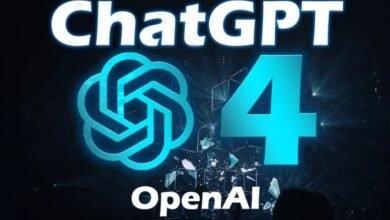Trending
What are the limitations of GPT-4 and how can they be addressed?

The latest generation of OpenAI’s GPT series, GPT-4, is expected to be a significant advancement in the field of artificial intelligence (AI) and natural language processing (NLP). However, despite its capabilities, GPT-4 is not without limitations. We will explore the challenges and potential solutions for addressing the limitations of GPT-4.
-
The Challenge of Bias in GPT-4
- The potential for biases in training data to influence GPT-4’s output.
- The risk of perpetuating societal biases and discrimination through GPT-4’s language generation.
- The need for ethical considerations in the development and deployment of GPT-4.
-
Addressing Bias in GPT-4
- Improving the diversity and representativeness of training data to reduce bias.
- Incorporating fairness and accountability metrics into the design of GPT-4.
- Engaging in ongoing monitoring and evaluation of GPT-4’s output to identify and address biases.
-
The Challenge of Explainability in GPT-4
- The complexity of GPT-4’s language generation algorithms makes it difficult to understand how it arrives at its output.
- The potential for GPT-4 to generate incorrect or harmful language without clear explanations of its reasoning.
- The importance of explainability for the ethical deployment of GPT-4 in various applications.
-
Addressing Explainability in GPT-4
- Incorporating explainability features into GPT-4’s design, such as attention maps and decision trees.
- Developing user interfaces that enable users to interact with and understand GPT-4’s output.
- Providing clear documentation and instructions for using GPT-4, including best practices for ensuring explainability.
-
The Challenge of Data Privacy in GPT-4
- The potential for GPT-4 to access and utilize sensitive user data without appropriate consent or safeguards.
- The risk of privacy violations and breaches as a result of GPT-4’s language generation capabilities.
- The need for strong data privacy protections in the development and deployment of GPT-4.
-
Addressing Data Privacy in GPT-4
- Incorporating strong data privacy protections into GPT-4’s design and architecture.
- Ensuring that user data is anonymized and secured when used by GPT-4.
- Engaging in ongoing monitoring and evaluation of GPT-4’s data privacy practices to identify and address potential risks.
Conclusion:
While GPT-4 represents a significant advancement in the field of AI and NLP, it is important to acknowledge and address its limitations. By prioritizing fairness, explainability, and data privacy in the design and deployment of GPT-4, we can maximize its potential while minimizing potential risks and harm to users.






